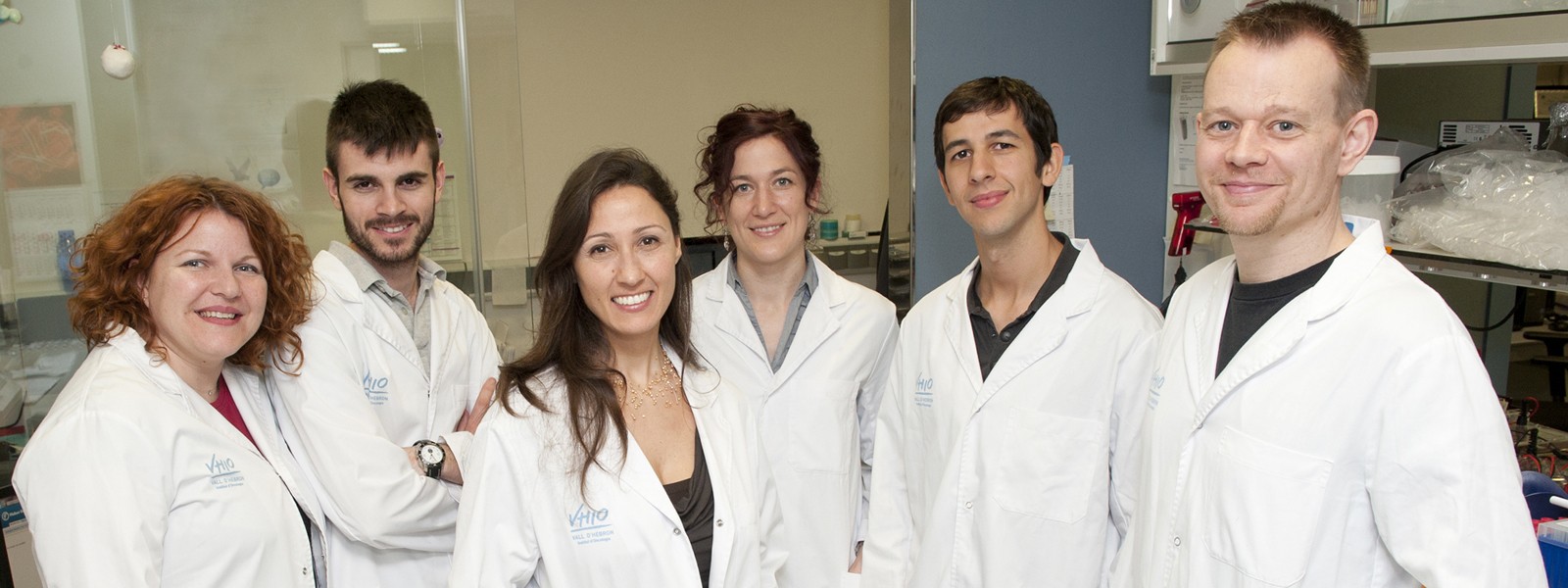DIRECTOR
MORE
Laura SoucekRESEARCH TEAM
Jonathan Richard Whitfield, Marie-Eve Beaulieu, Daniel Massó Vallés, Toni Jauset González and Erika Serrano del Pozo, Vall d´Hebron Institute of Oncology (VHIO)
COLLABORATING INSTITUTIONS
DESCRIPTION
Glioblastoma is the most common primary tumor that affects the central nervous system and is invariably lethal, due to its infiltrating nature and resistance to therapy. The oncogene Myc is causally implicated in most human tumors and the majority of glioblastomas have elevated Myc levels.
We previously designed a dominant negative of Myc activity, termed Omomyc, and employed it to demonstrate the excellent therapeutic potential of Myc inhibition using multiple mouse models of cancer. Among those, we showed that Myc inhibition by the Omomyc transgene has a dramatic therapeutic impact in glioblastoma, where it can trigger mitotic crisis in tumor cells, causing their arrest or death by mitotic catastrophe. Importantly, we observed minimal and well-tolerated side effects in normal tissues, and no resistance to systemic Myc inhibition therapy.
However, Omomyc has so far been considered a proof of principle, with applications limited to gene therapy. Surprisingly though, we now have found that the Omomyc peptide itself possesses cell-penetrating properties, opening up the possibility of its direct pharmacological administration as an innovative cancer therapy.

